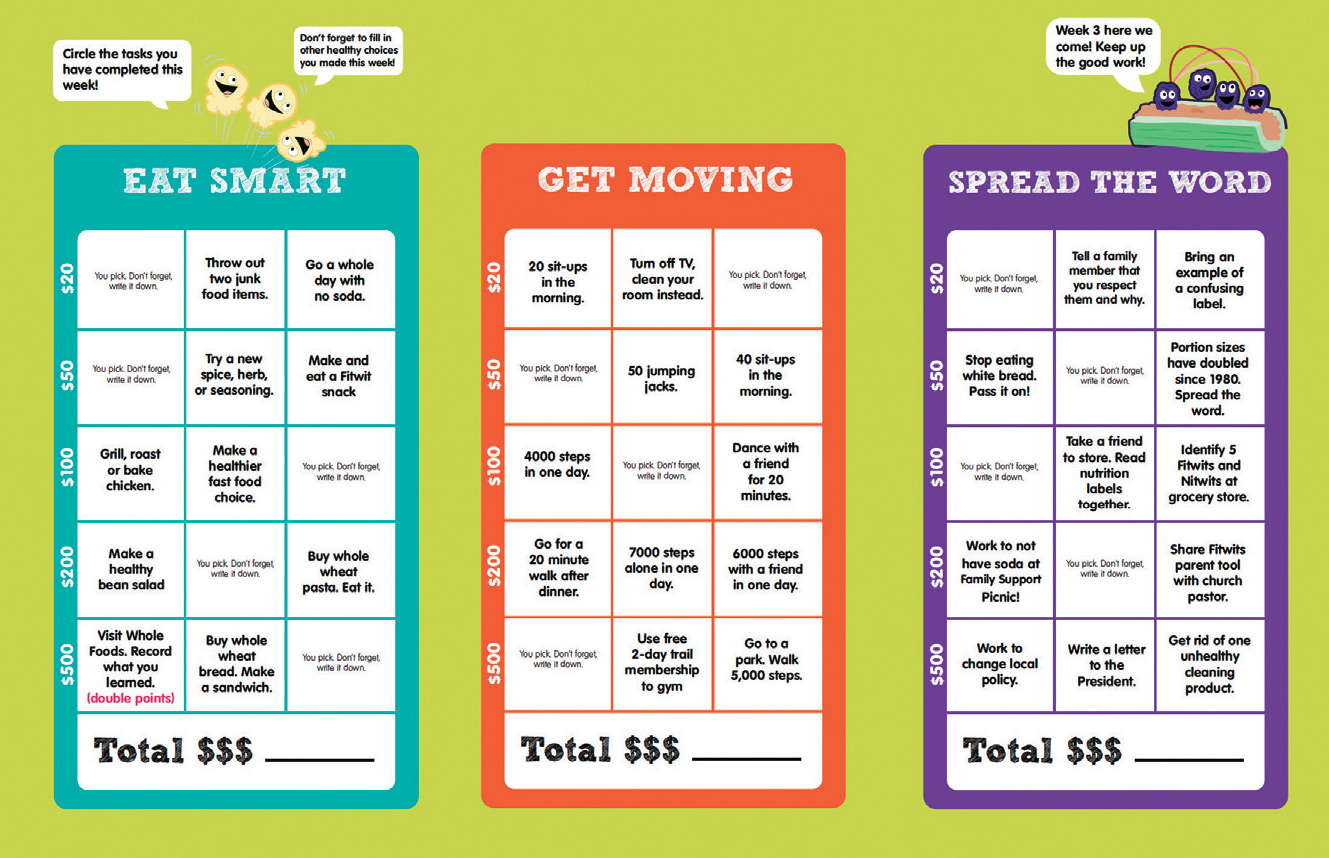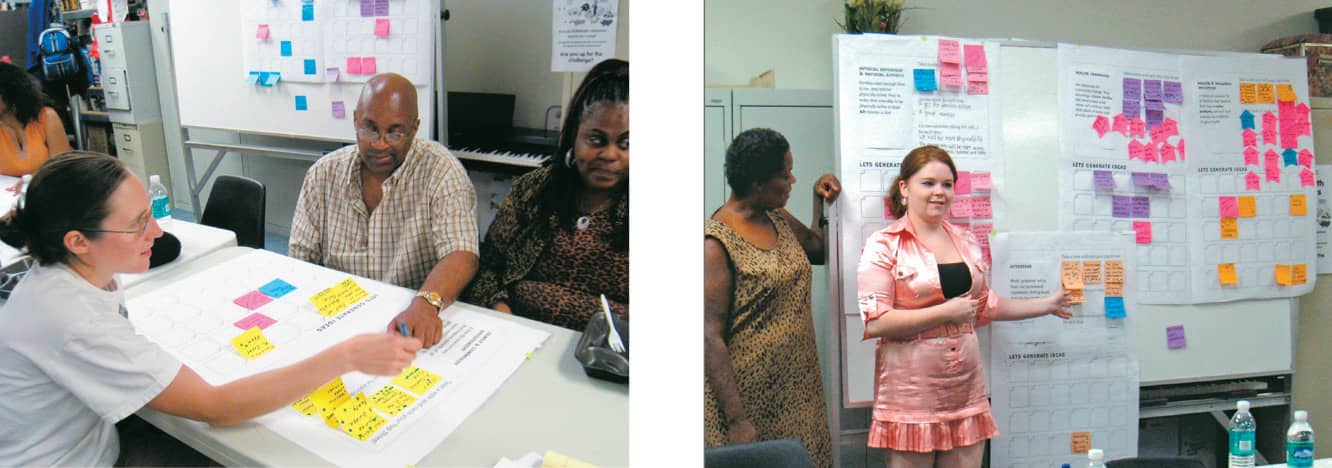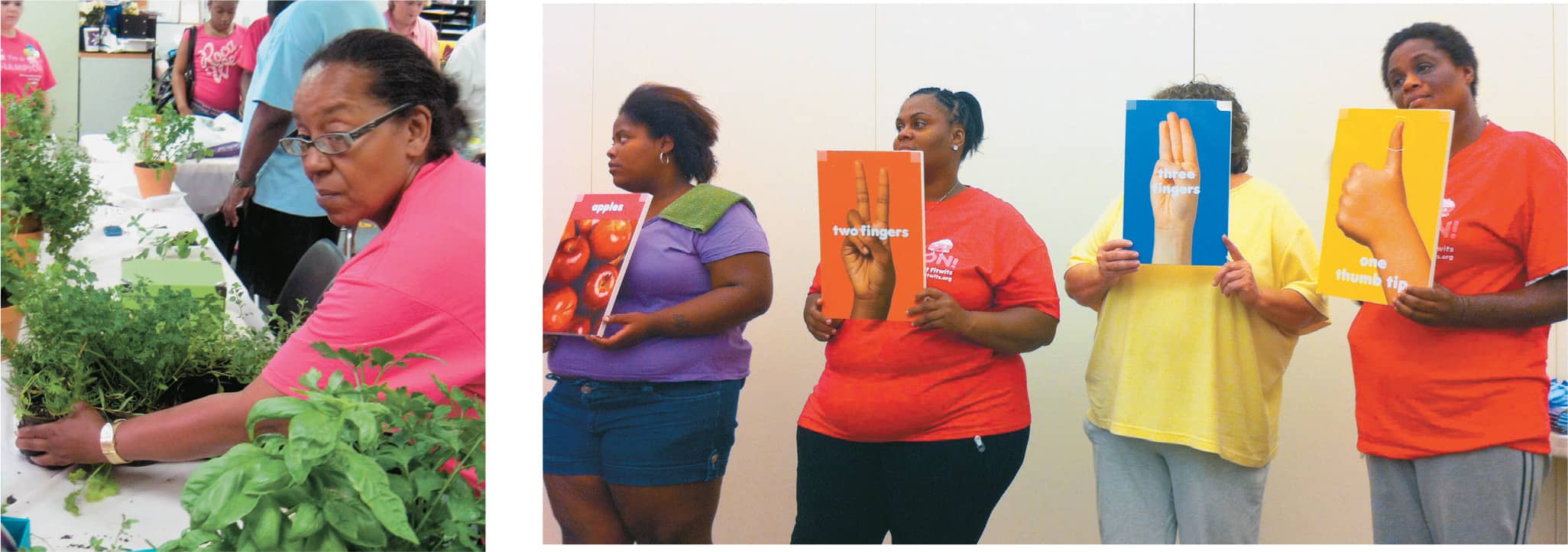RESEARCH METHOD • SYNTHESIS / ANALYSIS TECHNIQUE • RESEARCH DELIVERABLE
60 Participatory Action Research (PAR)

PAR is a cyclical, collaborative research process that seeks to intentionally change the community or other aspects that are the focus of the inquiry.1
Participatory Action Research (PAR) is differentiated from many “objective” methods of research inquiry that seek only to describe, understand, and explain, in its explicit mission to actually change the community, parties, or policies under study. With an overtone of empowerment, emancipation, and activism, the approach has been popular in arenas such as education, feminist research, and social justice. PAR is also appropriate where involving practitioners directly in social research serves the purpose of bringing skills and experience to facilitate change, advocating for the creation of practitioner researchers in areas such as nursing and social work.2
The process of PAR is dynamic and cyclical in its sequence of planning, taking action, observing, evaluating (including self-evaluation), and critical reflection prior to planning the next cycle.3 Robson outlines common stages of PAR as follows:4
1. Define the inquiry.
2. Describe the situation.
3. Collect evaluative data and analyze it.
4. Review the data and look for contradictions.
5. Tackle a contradiction by introducing change.
6. Monitor the change.
7. Analyze evaluative data about the change.
8. Review the change and decide what to do next.
PAR is defined by the collaborative relationship between researchers and those being researched. Specific research methods utilized within the approach are variable, but tend to be flexible, qualitative, and ethnographic, including traditional observations, participant observation, and interviews. While there is little evidence to date of PAR being formally employed in design research, the connections with participatory design and new movements in social impact by design suggest a natural affiliation and opportunities for an expanded relationship. For example, contextual, immersive, and collaborative methods of design including contextual inquiry, design ethnography, participatory design, design workshops, and creative tool kits would be powerful when aligned with PAR, corresponding naturally to an approach designed to address issues identified by the community at hand and inspiring action applied directly to problems.
PAR has been criticized for its weaknesses, most notably for its inherently political nature, the potential lack of systematic methods employed, and the shared power over research design and data collection that is necessary in the collaborative relationship. Caution must therefore be exercised when using PAR, in designing and conducting the inquiry, assumptions, and in communicating the project. However, the powerful change that can result from the PAR approach makes it worthy of serious evaluation and consideration by design.
1. First usage of the term “action research” is credited to Kurt Lewin in “Action Research and Minority Problems,” which appeared in the Journal of Social Issues 2 (1946): 34–46.
2. Robson, Colin. Real World Research: A Resource for Social Scientists and Practitioner-Researchers, 2nd ed. Oxford: Blackwell Publishers, 2002.
3. McNiff, Jean. Action Research for Professional Development, 2002, http://www.jeanmcniff.com/ar-booklet.asp
4. See note 2 above.
Further Reading
Sommer, Robert, and Barbara Sommer. A Practical Guide to Behavioral Research: Tools and Techniques. New York: Oxford University Press, 2002.
A professional journal, manifesto, and blog is dedicated to (Participatory) Action Research at http://arj-journal.blogspot.com and http://arj.sagepub.com
GET FIT WITH THE FITWITS : CO - DESIGNING A COMMUNITY - WIDE OBESITY PREVENTION GAME

The challenge for this project required connecting with a local community to design an appropriate health literacy game.


Engaged players described three positive behavior changes: (a) a positive self-image through the game by succeeding in healthy behavior game challenges; (b) better physical and psychological well-being and continued healthy activities; and (c) positive reinforcement from friends and family. Participants took the message well beyond the original game, promoting Fitwits through new activities in other communities, at work and in summer camps, and raising funds for their own appropriated version. The design research team was in turn inspired to expand the program and run it in a school, where materials are now being integrated into teaching units on health.
Courtesy of Kristin Hughes
